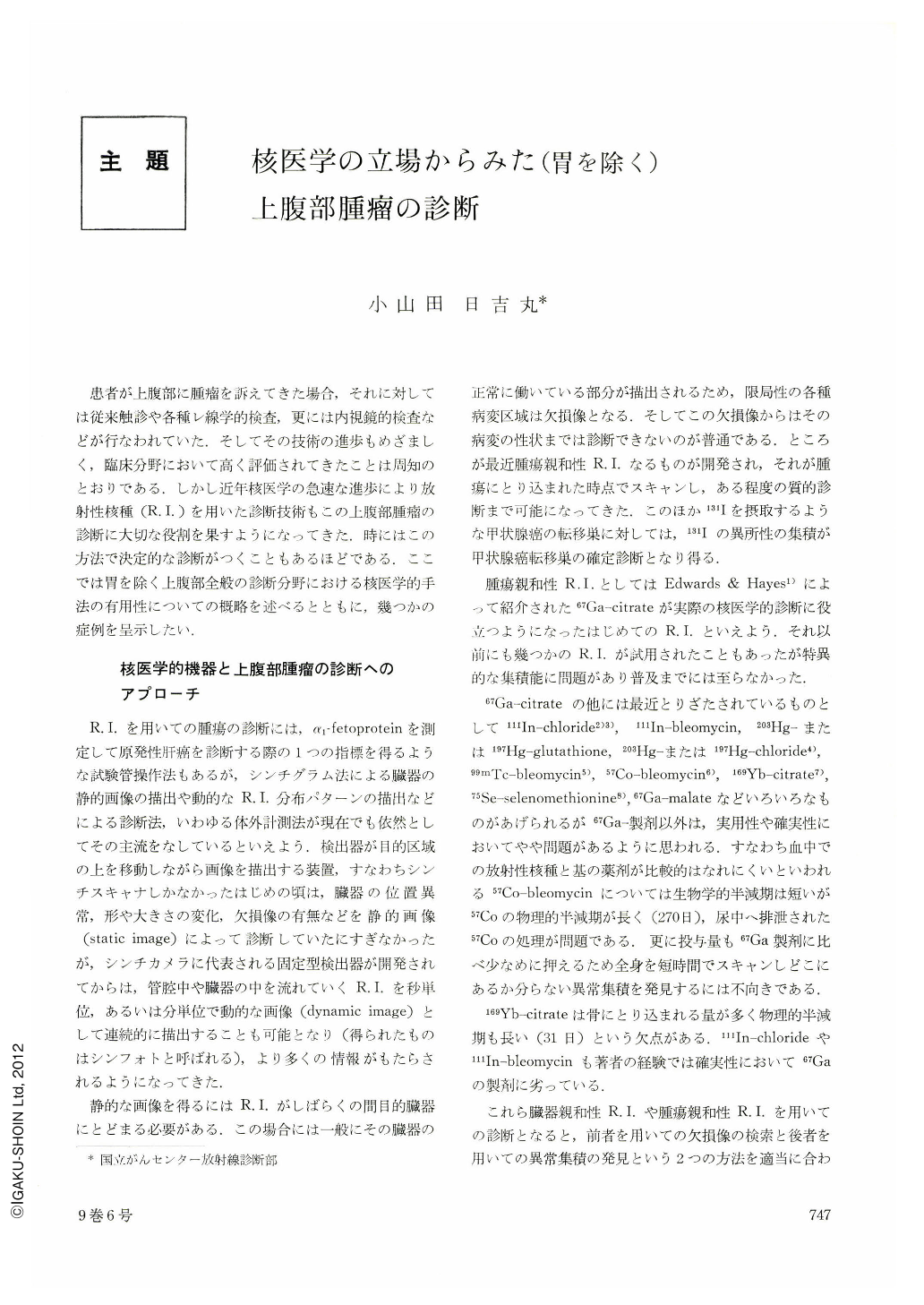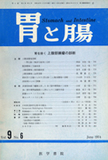Japanese
English
- 有料閲覧
- Abstract 文献概要
- 1ページ目 Look Inside
患者が上腹部に腫瘤を訴えてきた場合,それに対しては従来触診や各種レ線学的検査,更には内視鏡的検査などが行なわれていた.そしてその技術の進歩もめざましく,臨床分野において高く評価されてきたことは周知のとおりである.しかし近年核医学の急速な進歩により放射性核種(R. I.)を用いた診断技術もこの上腹部腫瘤の診断に大切な役割を果すようになってきた.時にはこの方法で決定的な診断がつくこともあるほどである.ここでは胃を除く上腹部全般の診断分野における核医学的手法の有用性についての概略を述べるとともに,幾つかの症例を呈示したい.
With the progress of Nuclear Medicine in these recent years, upper abdominal masses are now subjects in its diagnostic field. There are two ways of approaching the diagnosis; one is static image study and the other dynamic image study. For the static image study, there are two kinds of radiopharmaceuticals (RIs); one one is used for organ visualization, resulting in depicting the diseased areas as defects, and the other used for positive visualization of tumors. The latter is called “tumor-seeking agent”. For the dynamic image study, there are also two kinds of techniques; one is perfusion pattern study with a shortlived RI, such as 99mTc-pertechnetate, and the other functional imase study with the RI which follows biochemical process of certain organs.
The above-mentioned techniques are used in their various combinations to disclose the exact nature of the disease as accurate as possible. For example, enlarged liver is first checked for static image with the RI such as 99mTc-Sn-colloid which is taken up by RES in the body. Then, the diseased area depicted on the scintigram as a defect becomes the subject for the study with tumor-seeking agent and also the perfusion study sometimes.
For the diagnosis of splenomegaly, several RIs are used, such as 51Cr labeled and denatured red blood cells and 203Hg or 197Hg labeled bromo-1-mercuri-2-hydroxypropane or 1-mercuri-2-hydroxypropane. With these RIs the mass in the left upper quadrant can be diagnosed whether this is enlarged spleen or not.
For the pancreas,75Se-selenomethionine is exclusively used, which is picked not only by the pancreas but also by the liver. Therefore, liver image sometimes ieterferes with the scintigram quality of the pancreas, making the diagnosis difficult in some cases. This RI is used also as a tumor-seeking agent. But carcinoma of the pancreas is usually depicted as a cold area on the scintigram. In the kidney, static image can be taken with 203Hg or 197Hg labeled chlormerodrin or salyrgan and also with 99mTc-penicillamine compounds, showing the diseased area as a defect. Additional perfusion study with 99mTc-pertechnetate is also very useful in the diagnosis of such a defect, indicating possible renal carcinoma with a large amount of blood supply to the defect area in th staticimage and possible cyst or mass having less blood vessels with the image of poor blood supply. If 99mTc DTPA or 113mIn-DTPA is used, perfusion image as well as functional image can be obtained at one performance. Besides above-mentioned organ-specific RIs, tumor-seeking agents are often used. These are 67Ga-citrate or -malate, 111In-chloride or -bleomycin, 99mTc-bleomycin 57Co-bleomycin, 169Yb-citrate,75Se-selenomethionine etc. However, there are no RIs which do not concentrate in the benign lesions but exclusively in the malignant ones. Therefore, one must keep this fact in his mind when the diagnosis is made on the basis of radioisotope studies. Careful use of the above-mentioned various techniques in their combinations and also careful interpretation of the scintigrams obtained will enable us to make more accurate diagnosis for the upper abdominal masses.

Copyright © 1974, Igaku-Shoin Ltd. All rights reserved.


